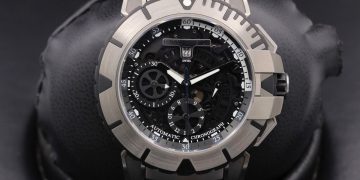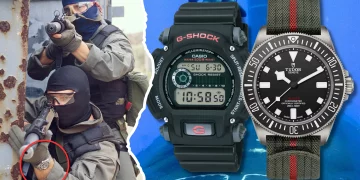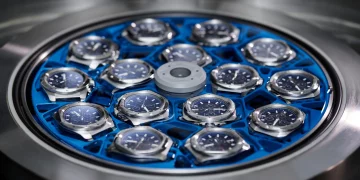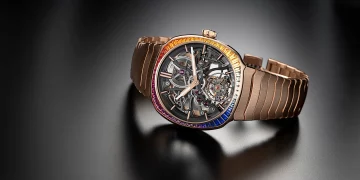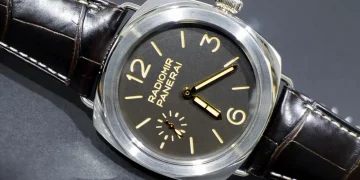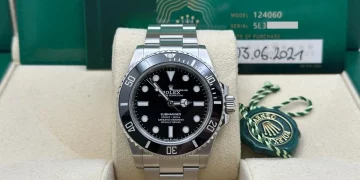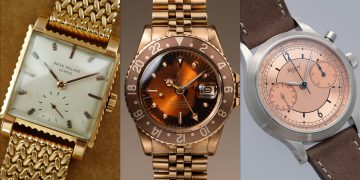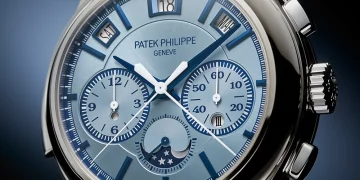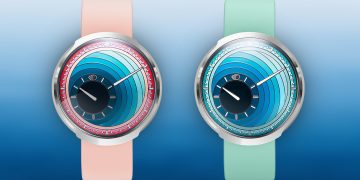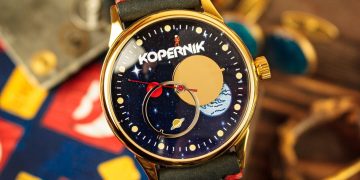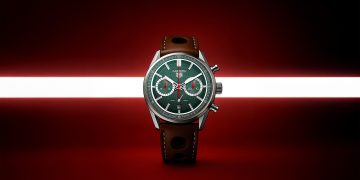Owning a Breitling flying watch, renowned for its precision, durability, and unique design, is a significant investment for watch enthusiasts, aviation professionals, and collectors alike. These timepieces, crafted with advanced technology and unparalleled Swiss craftsmanship, not only serve as functional tools for pilots but also stand as symbols of luxury and performance. However, like any high-end watch, a Breitling flying watch requires careful attention and proper maintenance to ensure its longevity, precision, and continued performance.
In this detailed guide, we will explore the essential aspects of maintaining and caring for a Breitling flying watch. From basic daily care to advanced servicing, we will delve into the key steps and tips to keep your Breitling in top condition. We’ll also discuss the factors that influence maintenance schedules, how to troubleshoot common issues, and when to seek professional servicing. Whether you’re a first-time Breitling owner or a seasoned collector, this article will provide you with the knowledge needed to ensure your timepiece performs at its best for years to come.
1. Why Is Proper Maintenance Crucial for Breitling Flying Watches?
Before diving into the specifics of maintaining your Breitling flying watch, it’s important to understand why proper maintenance is crucial. While Breitling timepieces are built to be highly durable, they are still intricate machines with hundreds of tiny components working together to ensure accuracy and performance. Improper care can result in:
- Decreased accuracy: A lack of servicing or care can cause the watch to lose its precision, which is especially important for aviation professionals who rely on their timepiece for accurate measurements.
- Damage to delicate components: Breitling’s sophisticated mechanisms, including its chronograph functions, slide rule bezels, and in-house movements, require careful handling to prevent wear and tear.
- Reduced lifespan: Like all mechanical devices, Breitling watches have a finite lifespan, and regular maintenance can extend this life, ensuring that your investment continues to perform optimally.
- Aesthetic degradation: Breitling watches are known for their luxurious design. Regular cleaning and care are necessary to prevent scratches, dirt accumulation, and fading, which can negatively affect the watch’s appearance.
By adhering to a proper maintenance routine, you can avoid these issues, protect your investment, and keep your Breitling flying watch functioning as it was designed to do.
2. Understanding the Components of a Breitling Flying Watch
To fully appreciate the importance of maintenance, it’s helpful to understand the core components of a Breitling flying watch. These timepieces are built with sophisticated technology, and knowing the parts that make up the watch will help you better understand their care needs.
a. The Movement
At the heart of any Breitling flying watch is its movement. Breitling is known for developing in-house calibers, such as the Caliber 01 and Caliber 04, which are mechanical chronograph movements known for their precision and durability. The movement is composed of various parts, including:
- Balance wheel: The component responsible for regulating time.
- Escapement: Ensures the watch’s gear train advances at a steady rate, allowing for accurate timekeeping.
- Chronograph module: For models like the Navitimer and Chronomat, which feature chronograph functions, this module allows for the measurement of elapsed time.
- Mainspring: Stores energy to power the movement.
Each of these components needs to be properly lubricated and adjusted during servicing to maintain optimal functionality.
b. The Case and Bezel
Breitling’s flying watches feature cases made from high-grade materials, including stainless steel, titanium, and even ceramic in certain models. The case houses the movement and ensures the timepiece’s protection from external elements. The rider tabs on the bezel, a hallmark of Breitling’s design, offer both a functional and aesthetic touch.
The case and bezel must be carefully handled to prevent scratches, dents, or other types of damage. Water-resistant features also require attention, especially after exposure to moisture.
c. The Dial and Hands
Breitling’s dials are known for their bold designs, high legibility, and multiple sub-dials (especially in chronograph models). The hands (hour, minute, second, and chronograph hands) and markers are crucial for readability. The dial’s clarity is also dependent on the condition of the sapphire crystal that protects it. Regular cleaning and careful handling are necessary to ensure that the dial remains free of smudges, scratches, and other forms of damage.
d. The Strap or Bracelet
Whether your Breitling flying watch is fitted with a leather strap, rubber strap, or stainless steel bracelet, the band is an essential component for both comfort and style. Leather and rubber straps may degrade over time with wear, while stainless steel bracelets may develop scratches or lose their shine. Regularly inspecting the strap for wear and keeping it clean is important for both functionality and appearance.
3. Daily Care and Handling Tips
Proper daily care is the first step in keeping your Breitling flying watch in top shape. By following a few simple guidelines, you can significantly reduce the need for major repairs or services.
a. Keeping Your Watch Clean
A clean Breitling flying watch not only looks better but also performs better. Dust, dirt, and oils from your skin can accumulate on the watch’s surface, which may affect the functionality and aesthetic of the timepiece. Regular cleaning is essential, especially for a watch worn daily.
- Case and Dial: Use a soft microfiber cloth to gently wipe the case and dial. Avoid using abrasive materials that can scratch the surface. You can lightly dampen the cloth with water if necessary, but never immerse the watch in water unless it is designed to be fully waterproof.
- Sapphire Crystal: Use a soft, non-abrasive cloth to clean the crystal. If there are stubborn smudges, you can use a microfiber cloth lightly dampened with water or a lens cleaner.
- Straps: For leather straps, use a leather cleaner and conditioner to keep the material supple and prevent cracking. For rubber straps, wash them gently with warm water and mild soap. Stainless steel bracelets can be wiped down with a soft cloth, while a toothbrush can be used to clean between the links.
b. Winding and Setting the Watch
While many Breitling flying watches are automatic, it’s important to remember that the movement may need to be wound manually if the watch has not been worn for several days. Here’s a basic guide for winding and setting your Breitling watch:
- Winding the Watch: If your Breitling is a mechanical automatic model and has stopped, wind the crown clockwise about 30-40 times to get the movement started.
- Setting the Time: Pull the crown out to the second position to adjust the time. Be sure to set the time correctly, especially if adjusting AM/PM for models with a date function. Never adjust the date between 8 PM and 4 AM, as the date-change mechanism might be engaged and could cause damage to the movement.
c. Avoiding Magnetic Fields
Strong magnetic fields can disrupt the accuracy of mechanical movements. Keep your Breitling flying watch away from sources of strong magnetic fields, such as speakers, cell phones, or computers, as prolonged exposure can affect the watch’s timekeeping accuracy.
d. Protecting from Extreme Conditions
Although Breitling flying watches are built to withstand the rigors of aviation and outdoor environments, it’s still essential to avoid subjecting the watch to extreme conditions whenever possible. This includes:
- High-impact shocks: Avoid dropping your watch or subjecting it to hard impacts.
- Extreme temperatures: Avoid exposing the watch to very hot or cold temperatures, as this can affect the movement’s precision and materials over time.
- Water exposure: While many Breitling models are water-resistant, this does not mean they are waterproof. Ensure that the crown is pushed in or screwed down tightly before exposing the watch to water. Always check the manufacturer’s specifications for the water resistance level of your model.
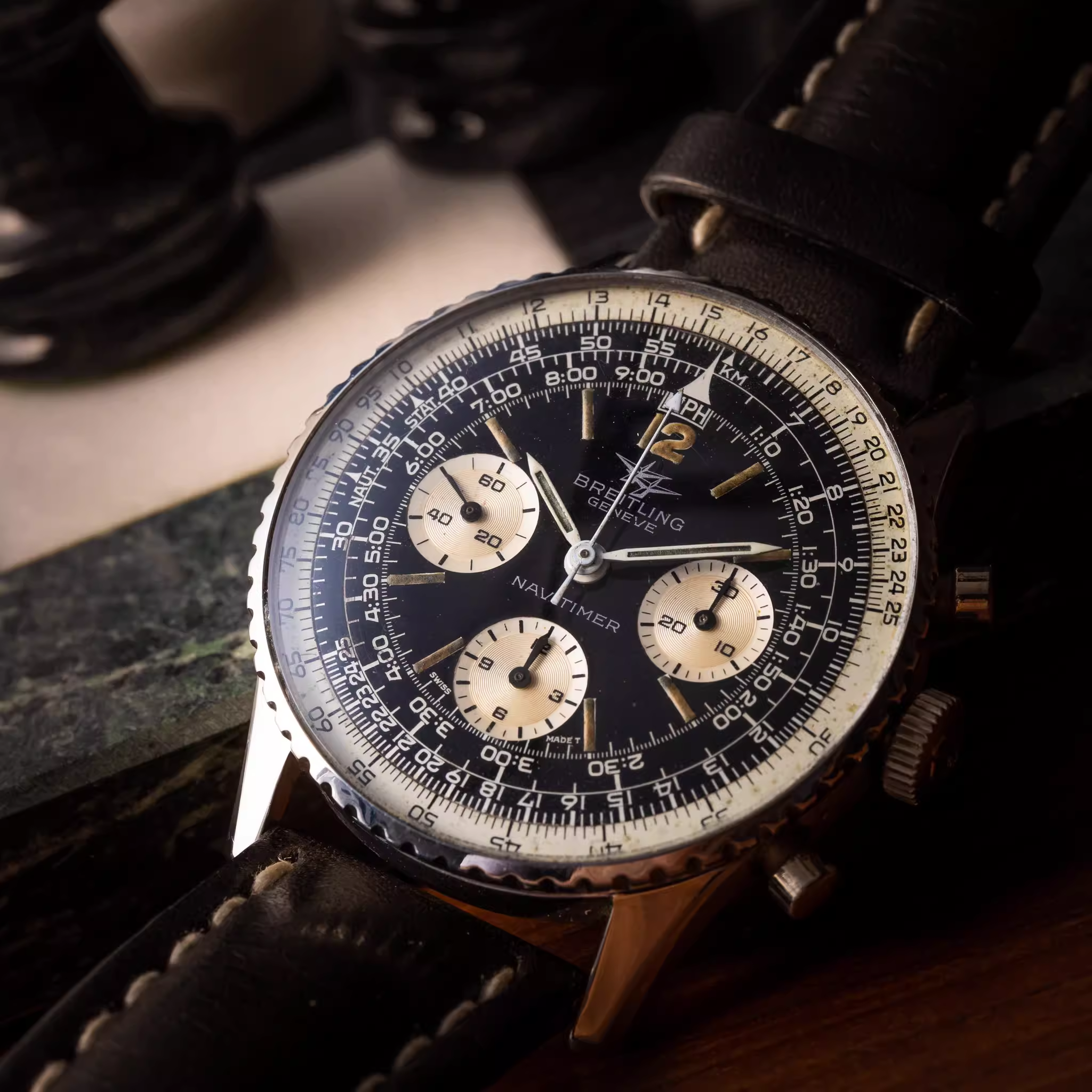
4. Regular Servicing: When and Why You Should Service Your Breitling Flying Watch
Even with proper care, mechanical watches need to be serviced periodically to ensure they continue to perform at their highest level. Breitling recommends servicing your watch every 3-5 years, but this may vary depending on your usage and the specific model.
a. Signs That Your Breitling Needs Servicing
You should consider servicing your Breitling flying watch if you notice the following:
- Inaccurate timekeeping: If the watch begins to lose or gain time significantly, it may need to be serviced.
- Chronograph malfunctions: If the chronograph functions (start, stop, reset) are not working correctly, this may indicate a need for professional repair.
- Difficulties with winding or setting the time: If the crown becomes stiff or difficult to manipulate, it could indicate an issue with the movement or crown mechanism.
- Moisture inside the case: If you notice condensation or water inside the crystal, this is a sign that the seals have failed, and the watch needs to be pressure-tested and serviced.
b. The Servicing Process
Breitling provides full servicing options for their watches, including cleaning, lubricating, and adjusting the movement, as well as replacing any worn or damaged components. The servicing process typically involves:
- Disassembling the watch to inspect and clean the components.
- Lubricating the movement to ensure smooth operation.
- Testing the movement for accuracy and precision.
- Replacing any worn or damaged parts, including the gaskets, which maintain the watch’s water resistance.
c. Choosing a Professional Service Center
For any Breitling flying watch, it’s recommended to have servicing done by a professional authorized service center. This ensures that the work is done by trained experts familiar with Breitling’s specific movements and technologies. Additionally, servicing at an authorized center helps maintain the authenticity of your watch and can ensure that any work performed will be covered under warranty.
5. Storing Your Breitling Flying Watch
Proper storage is just as important as daily maintenance when it comes to preserving your Breitling flying watch. When you’re not wearing your watch, follow these guidelines:
a. Watch Box
Store your Breitling in a watch box to protect it from dust, scratches, and accidental drops. Many Breitling watches come with a specially designed case for this purpose. A watch box also ensures that the watch is kept in a controlled environment, reducing the risk of exposure to moisture or extreme temperatures.
b. Winder for Automatic Watches
If you own an automatic Breitling flying watch, consider using a watch winder when you’re not wearing it. A watch winder is a device that keeps your automatic watch ticking by gently rotating it while it’s stored. This can help maintain the accuracy of the watch, especially if you rotate between different timepieces.
c. Avoid Direct Sunlight
Long exposure to direct sunlight can cause the watch’s dial or strap to fade over time. Always store your Breitling flying watch in a shaded, cool location to prevent discoloration and material degradation.
6. Conclusion: Caring for Your Breitling Flying Watch
A Breitling flying watch is not just a tool; it’s an investment in craftsmanship, luxury, and precision. By following proper care and maintenance guidelines, you can ensure that your timepiece continues to perform at its best for years to come. From daily cleaning to regular servicing and storage, each step plays an important role in preserving the integrity and beauty of your Breitling flying watch.
By understanding the key components of your watch, staying vigilant about wear and tear, and investing in professional servicing when needed, you will not only protect your watch but also enhance your experience of owning a true piece of horological excellence.



